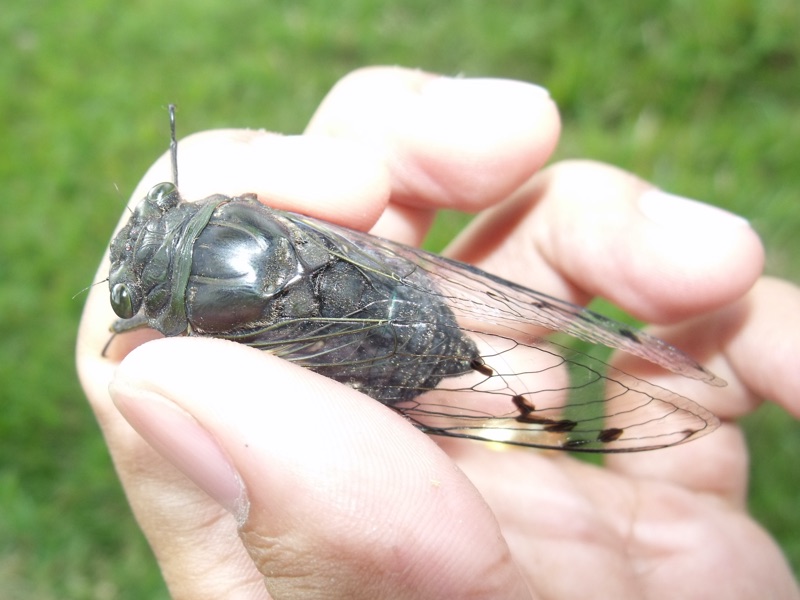Next year (2013) Brood II periodical cicadas will emerge along the eastern coast of North America (see our brood chart for where). You might find yourself wondering, “what is a brood“.
Here is a explanation of broods from Cicadas @ UCONN (formerly Magicicada.org):
All periodical cicadas of the same life cycle type that emerge in a given year are known collectively as a single “brood” (or “year-class”). The resulting broods are designated by Roman numerals — there are 12 broods of 17-year cicadas (with the remaining five year-classes apparently containing no cicadas), and 3 broods of 13-year cicadas (with ten empty year-classes).
The concept of periodical cicada broods can be difficult to wrap your mind around, so I wanted to present some analogies to help folks understand what a brood is. Generally speaking, it is important to not anthropomorphize insects, but if it helps you understand what a brood is, we can let it slide…
The Family Reunion analogy
Imagine that each brood is a family, and that each family has a family reunion every 17 years. They also, always, celebrate in the same location.
The next Brood II “family reunion” happens in 2013; their last reunion happened in 1996; and their next reunion will happen in 2030. They always have their reunion in CT, MD, NC, NJ, NY, PA and VA — its their favorite restaurant.
The High School Reunion analogy
Imagine that each brood is a high school class, and that class has a reunion every 17 years. They also, always, celebrate in the same location.
The next Brood III “high school reunion” happens in 2014; their last reunion happened in 1997; and their next reunion will happen in 2031. They always have their reunion in IA, IL and MO — their favorite hometown pub.
The Wedding Anniversary analogy
Imagine that a brood is a married couple, and they celebrate their wedding anniversary every 17 years. (Caution: if you’re a human don’t try celebrating your wedding anniversary only every 17 years – you won’t have a happy marriage).
The next time couple Brood IV celebrates their anniversary is 2015; the last time they celebrated their wedding anniversary was 1998; they next time they will celebrate their wedding anniversary will be 2032. They always celebrate in IA, KS, MO, NE, OK and TX — the restaurant where they first met.
Stragglers
Stragglers are periodical cicadas that emerge in years prior to, or after they are expected to emerge — typically 4 years earlier. This male Magicicada should have emerged in 2013, but instead he emerged in 2009 – four years earlier than expected.
We can extend these analogies to cover straggling.
If a periodical cicada shows up four years early to his family or high school reunion, he is not going to have much fun, because few, if any other periodical cicadas will be around to celebrate with. If Mr. Magicicada shows up early or late for a wedding anniversary, he is definitely not going to have any fun.
I think the High School Reunion works best.
Feel free to submit any other analogies in the comments…













